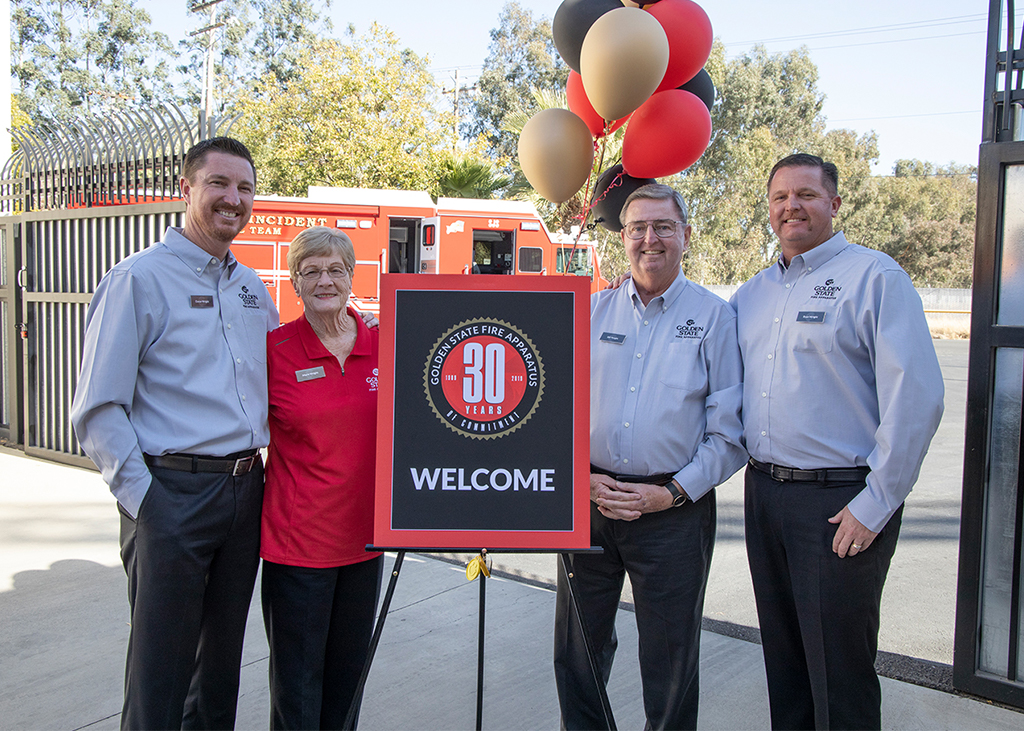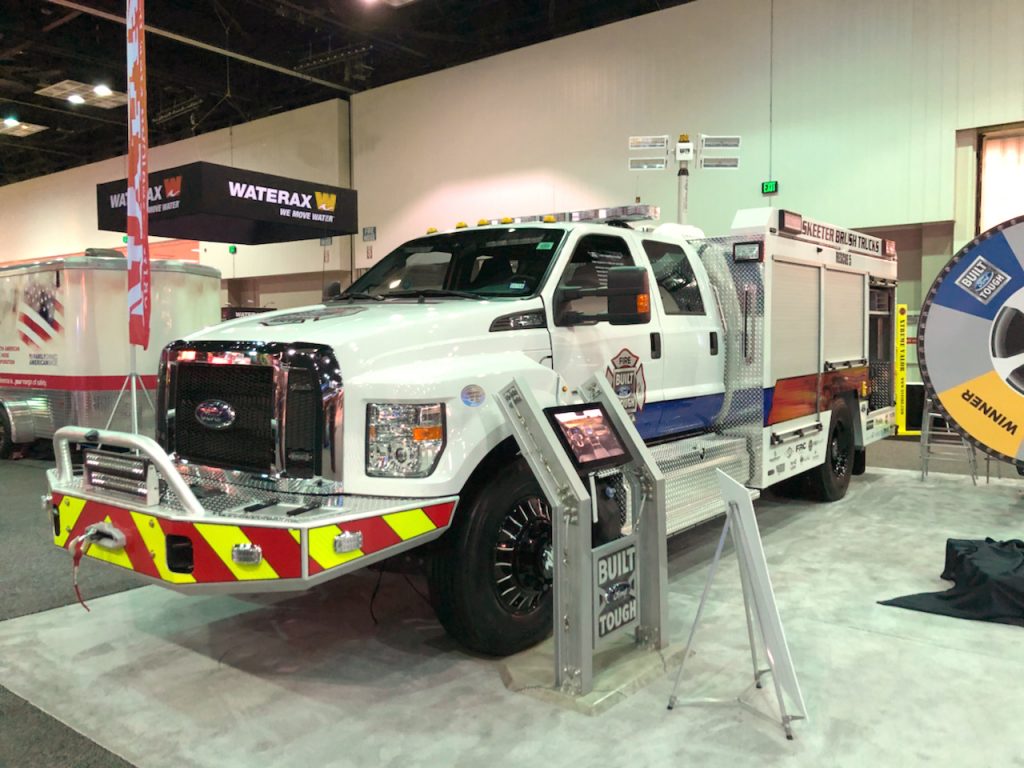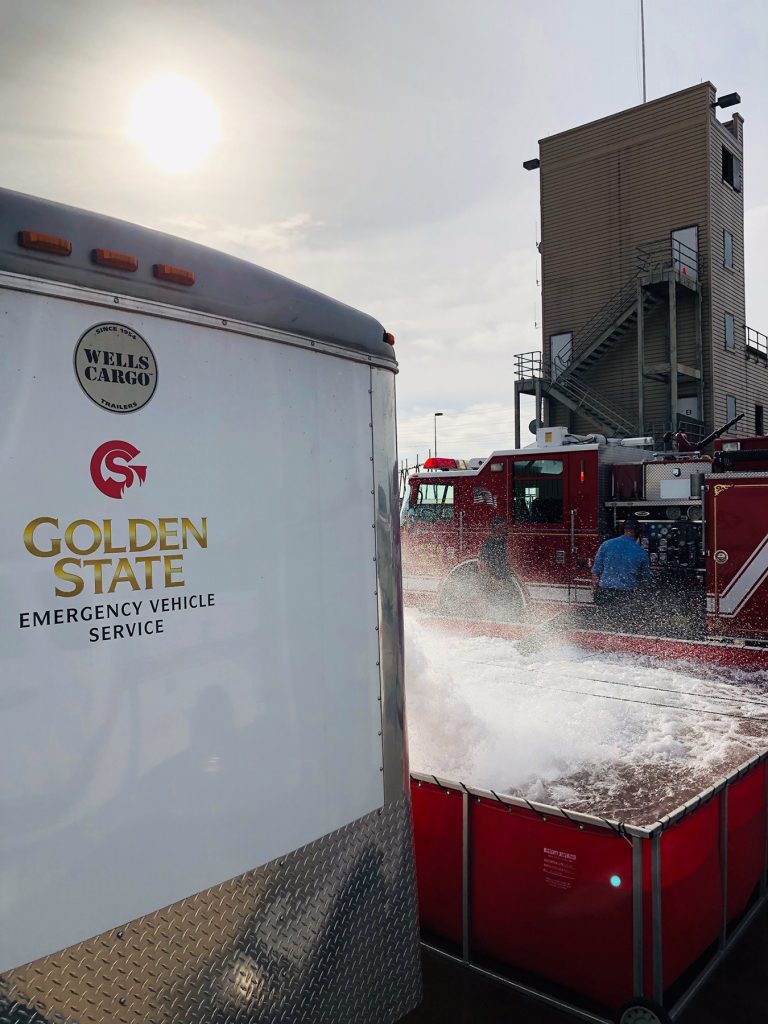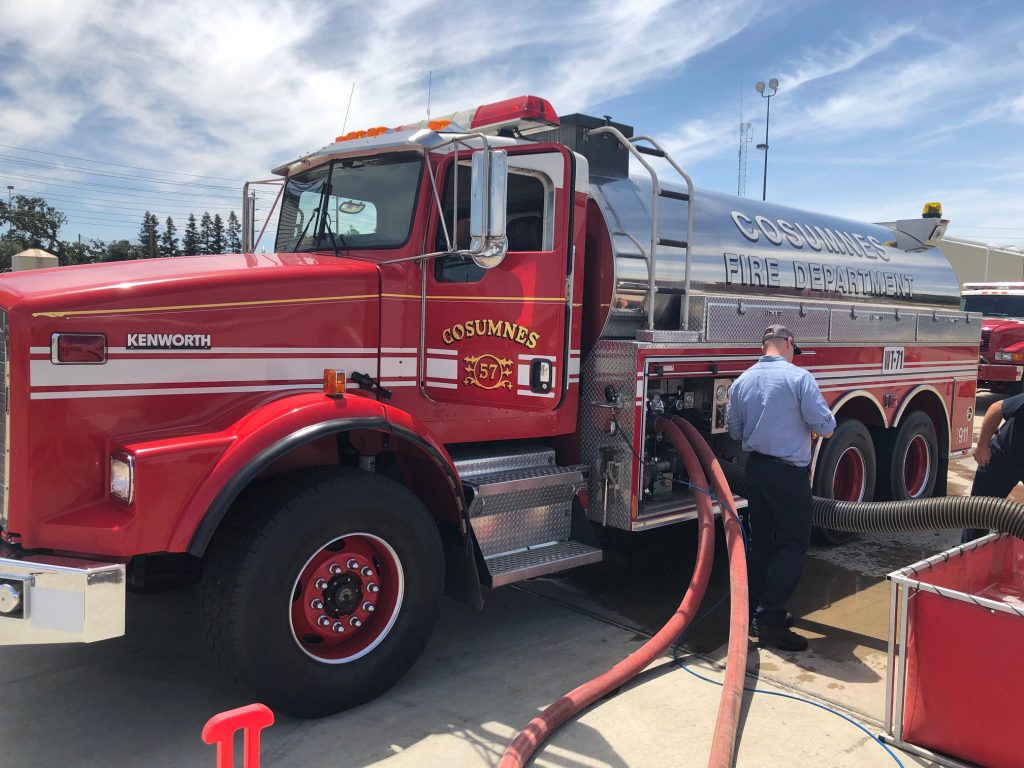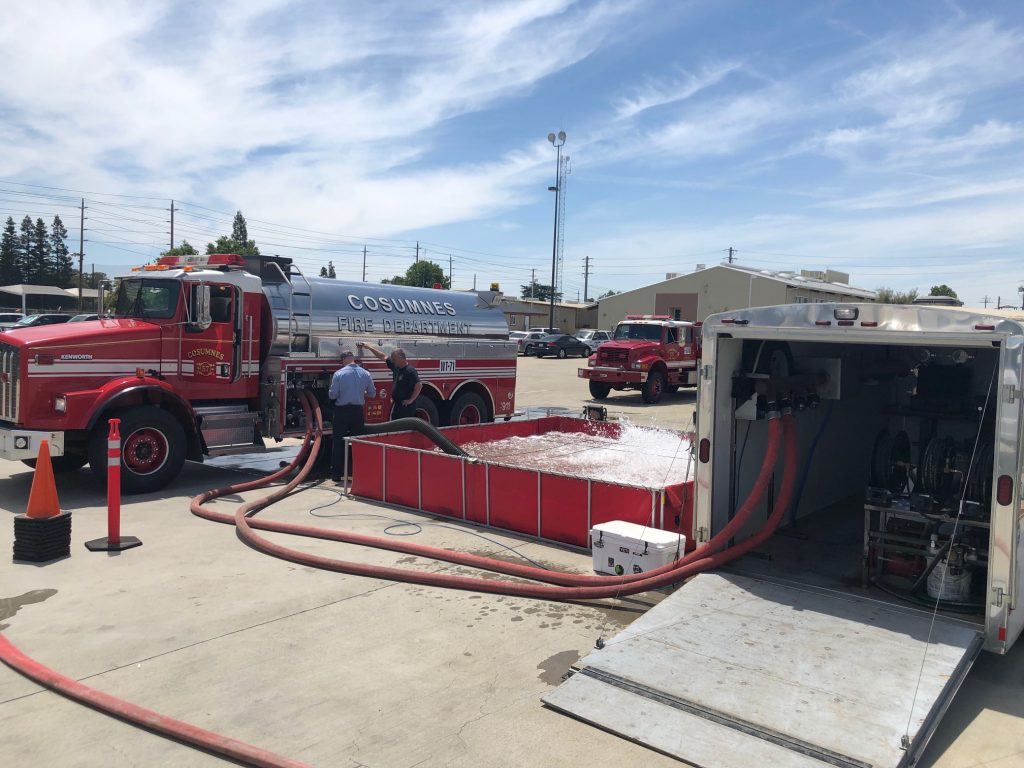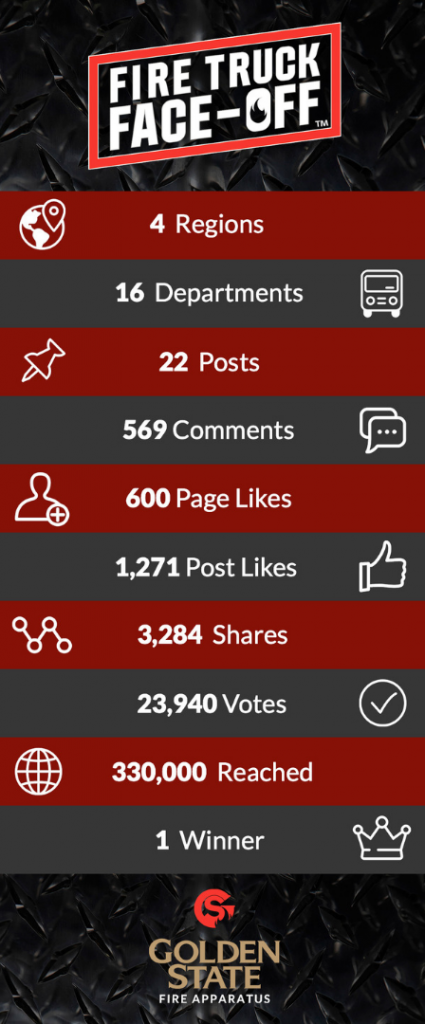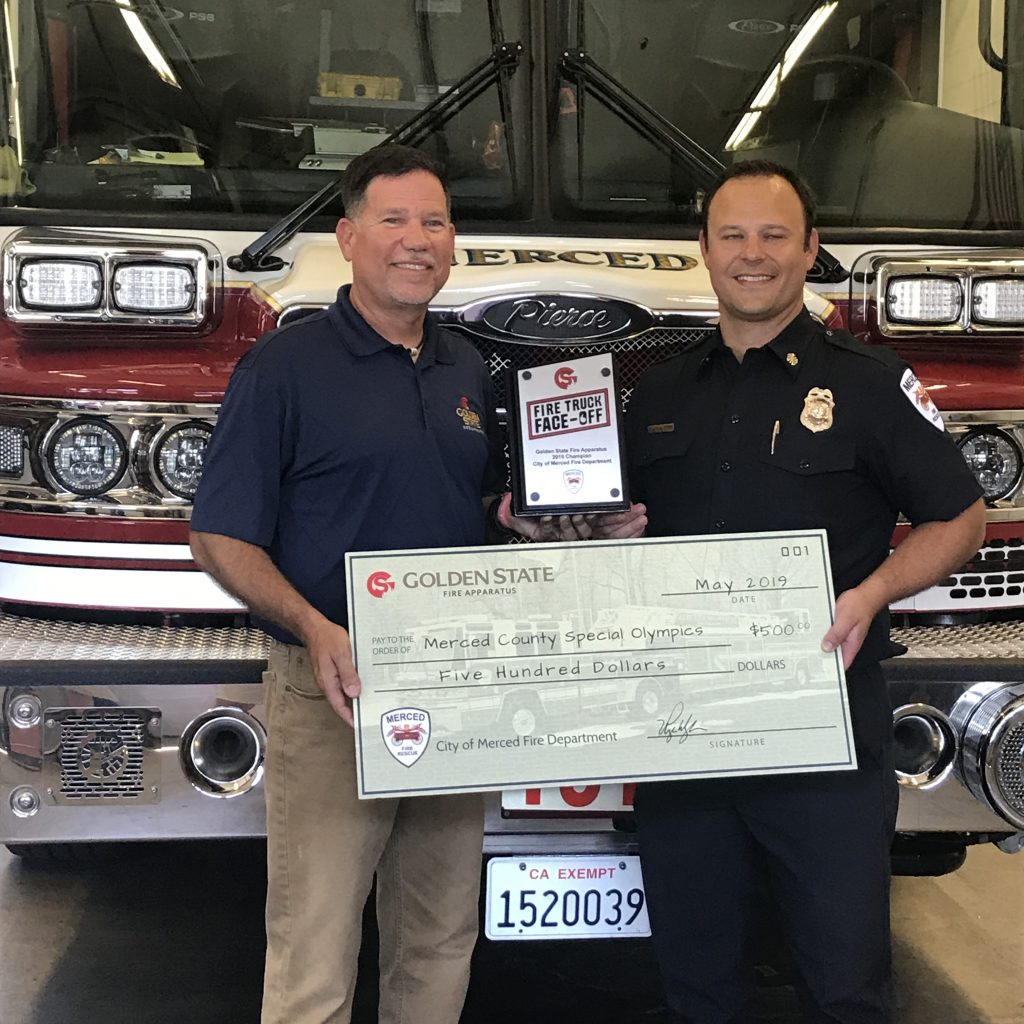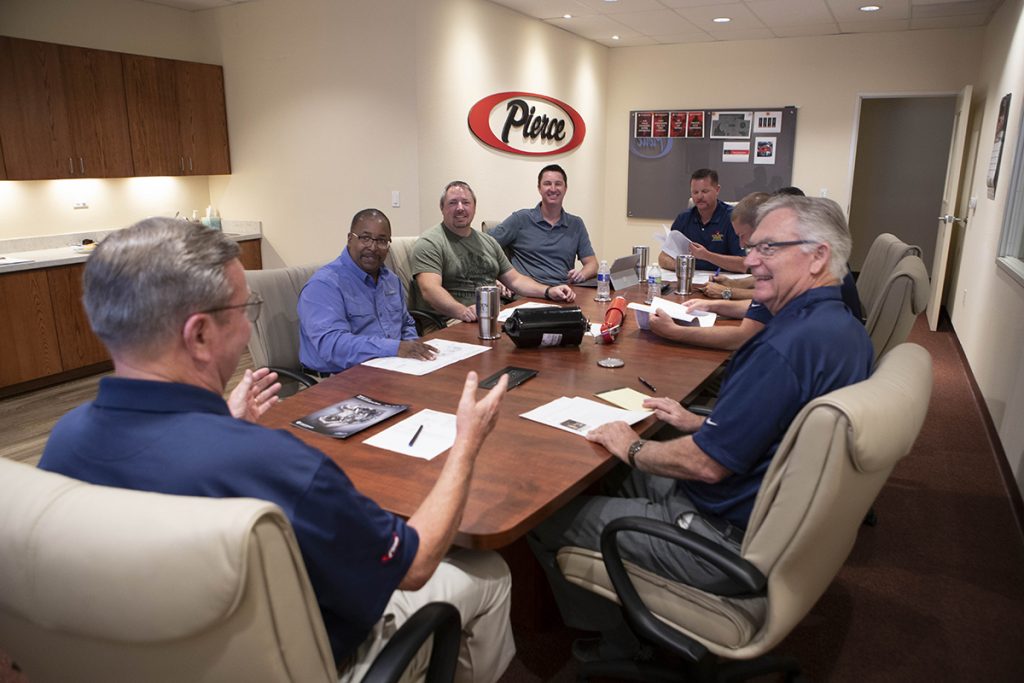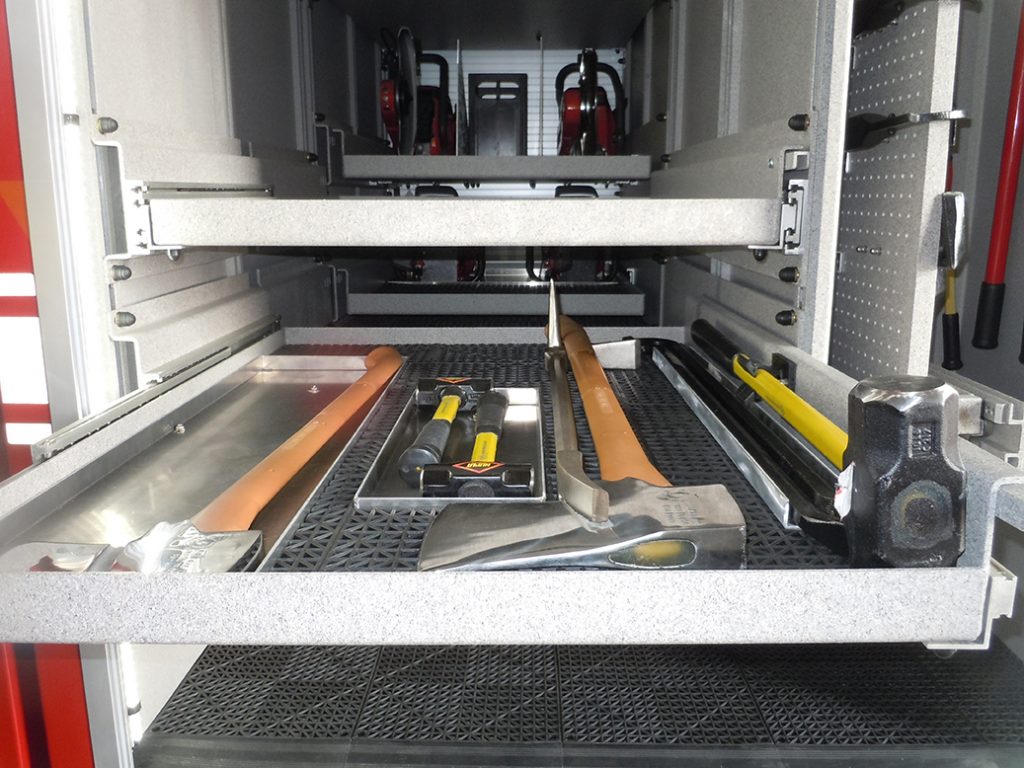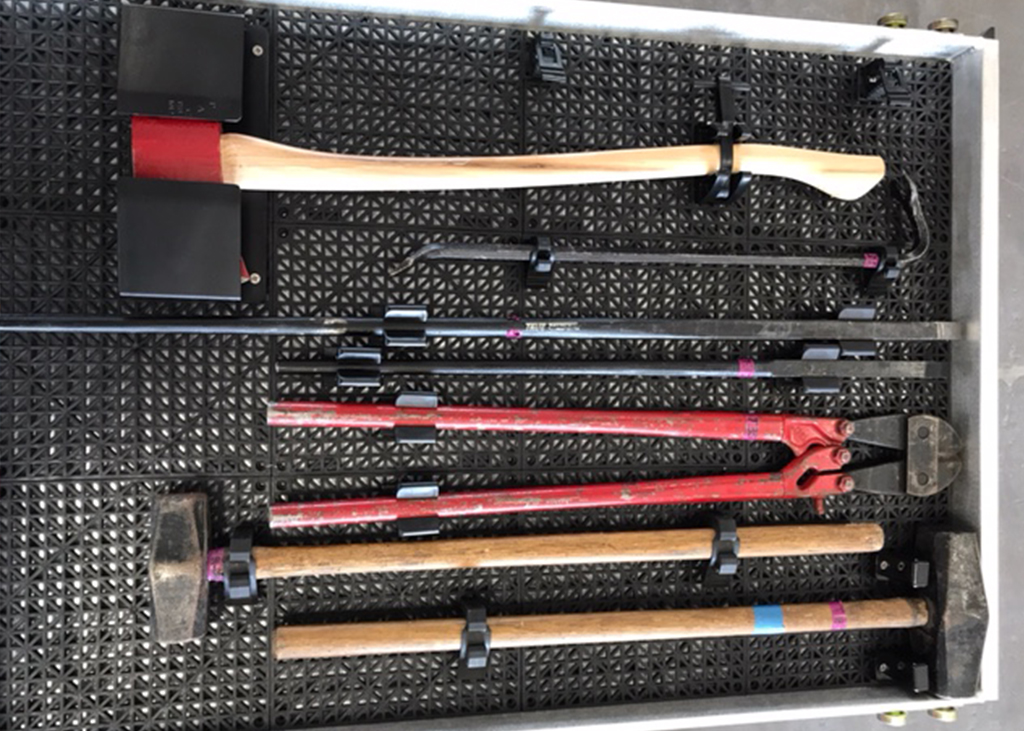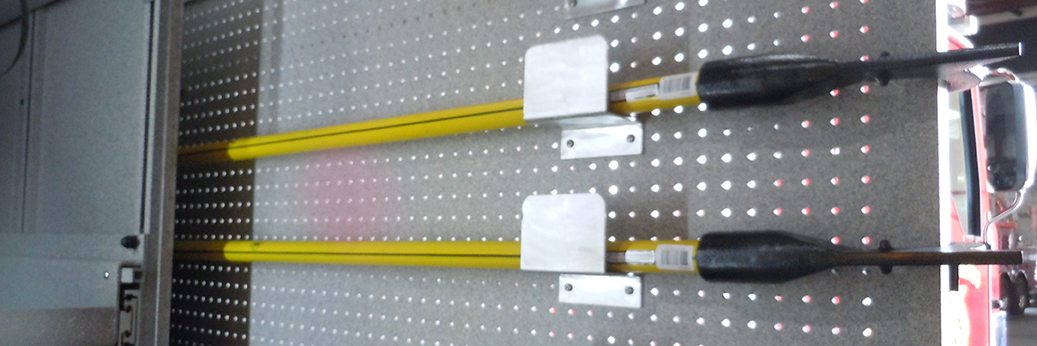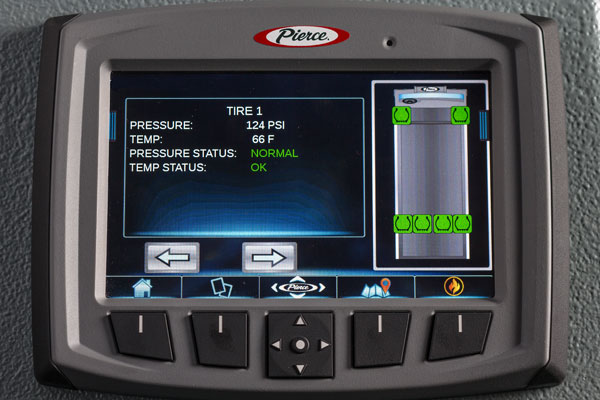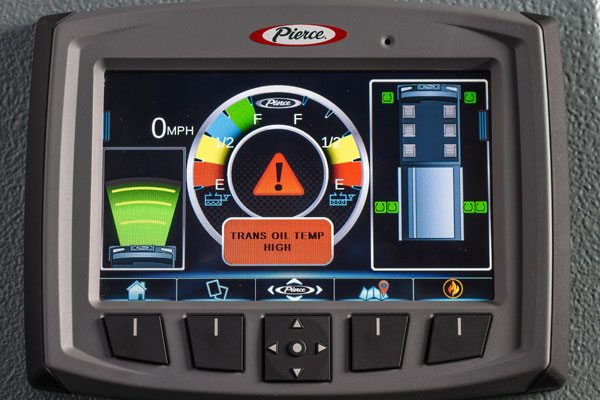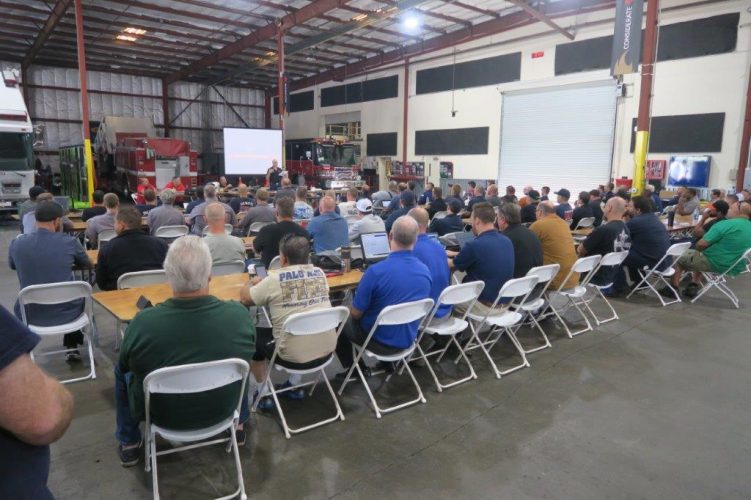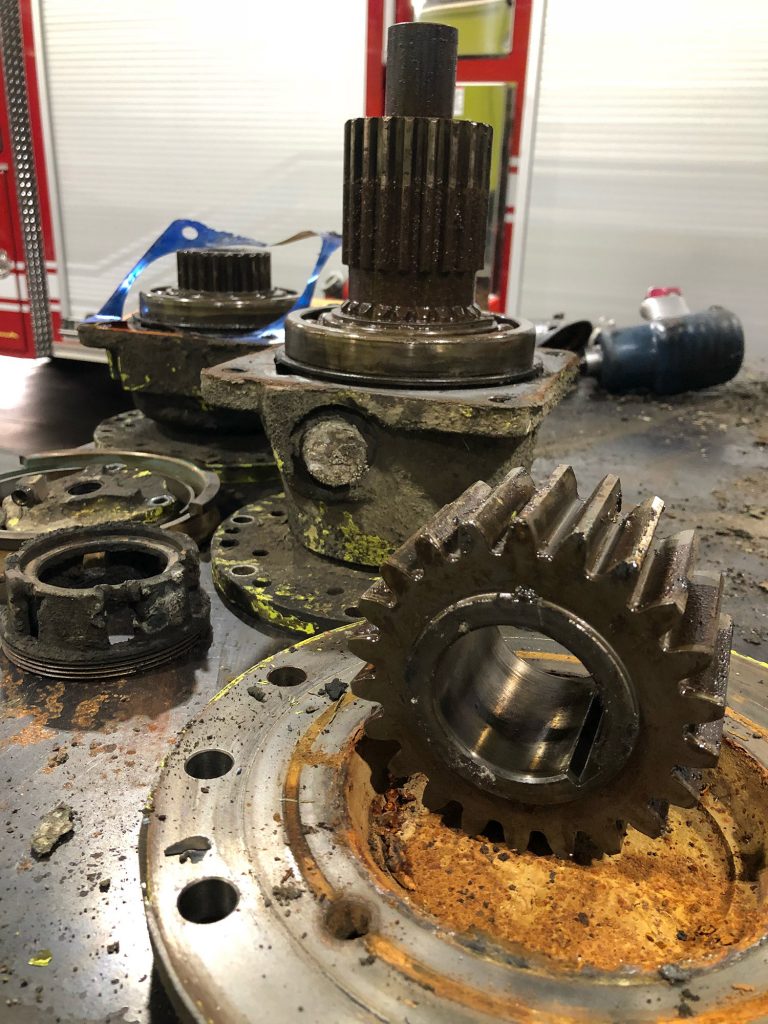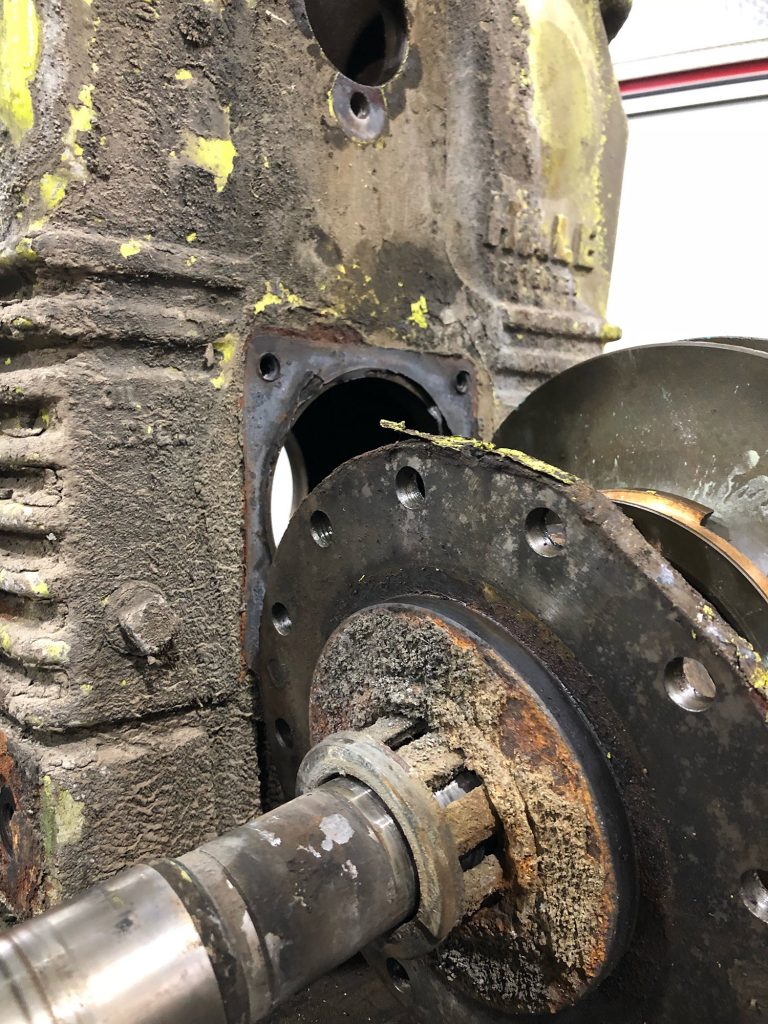People, service, relationships best define our first 30 years
Golden State Fire Apparatus recently celebrated its 30th anniversary in business with an event at its Sacramento headquarters. Golden State is the No. 1 dealer of firetrucks and rescue vehicles in Northern California. It employs 36 people at its 33,814-square-foot facility, which includes a state-of-the art service department as well as a fully stocked parts department. After Golden State Fire marked its milestone, owner and President Daron Wright reflected on the company’s history, its culture, its key relationships with customers and vendors, and his vision for the future.
Myers welcomes a chance to consult with customers to ensure they’re ordering the exact part they need. Pierce Manufacturing – which builds most of the apparatus sold by Golden State – has a robust website that allows fire departments to see all the parts for their vehicles while on the phone with Myers and his staff. Customers can go to pierceparts.com to access parts information, ID numbers, component catalogs and operator manuals; watch training videos; and research exactly what they need for their equipment.
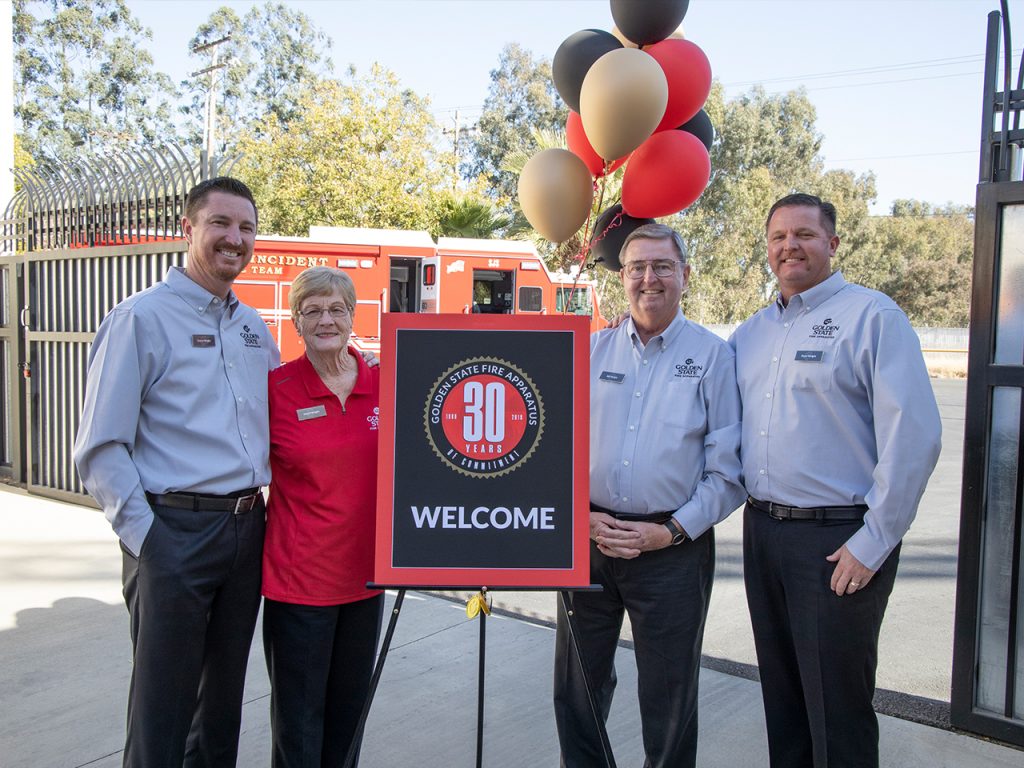
Golden State Fire Apparatus owners, left to right, Daron, Marie, Bill and Ryan Wright.
We believe it says more about our people than it does about any business acumen we possess or market conditions we’ve realized. This is a very human element business and it takes people to get things done. At the core of our business are people who want to serve and perform. I also believe that we have a clear understanding of competition and what it means to compete. And, it has nothing to do with our brand competition.
We have grown one step at a time, one person at a time and one customer at a time. We have evolved prudently. Many people around us have contributed to the overall growth. Without having that support network, we would not have the opportunities that have been afforded to us.
The relationships that have been built. The family atmosphere the team has created. We have great relationships with customers, suppliers and support systems alike. To this day, we still are engaged with past customers and employees, and it is truly humbling to be around them and get their perspectives of the right way to do business and how impactful our interactions have been and continue to be. For our younger generation, it is so encouraging for them to be in this atmosphere.
Building and maintaining relationships is important in business, but I do not believe it is a business tactic of ours. I believe it is more important to be who you are at the core. Like, do you really care to “serve” these people because that is who you are, or do you care to “serve” because there is a benefit to you? I look to my parents as no greater examples of being who you are. This is what past and present customers have told us. The great thing is that is the only way we know to do business because our leaders have been consistent in demonstrating this and it has permeated the organization and just became the way we conduct business. Are we perfect? Absolutely not and we don’t strive to be. We strive to be who we are. It’s a matter of the heart, in my opinion.
We are simple people and we run our organization with one simple principle — treat others the way you would like to be treated. I believe they call that the “Golden Rule.” We see it exactly opposite as the question being posed. We believe we are the lucky and blessed ones because these people have been so loyal to GSFA. Why are we the lucky ones? The employees have done a great job of building a culture that is almost impenetrable. If we try to implement something new that they are not in agreement with, they will let us know. I love it when that happens because I know the culture is alive. I believe this is what it looks like when it works best. And we have great people in every department within the organization. More family than anything.
I think some of the reasons why Pierce is the right partner for us are obvious (the product, R&D, product support, etc.). The real reason why it is the right partner is because Pierce’s people are yoked or in line with our values and beliefs and the way we conduct business. There are so many examples that I could share to validate my statements. They look out for us and we look out for them. I would consider our Pierce relationship as family. It is not always perfect, nor does either organization always make the right decision, but we are better together and it is a valued partnership. Our consistent relationship spanning 30-plus years has been a benefit to the Central and Northern California market.
Two-thirds of our customer historically own two or more units and are repeat customers. This would also suggest that one-third of our customers are a one-truck owner(s). To me, it says that we are here to serve. It doesn’t matter if you are the biggest department on the block or the smallest on the block. It doesn’t matter if your budget is abundant or your budget has never allowed you to purchase a brand new fire truck. We are here to serve and all we ask for is an opportunity to stand in front of you, listen to your needs and explain how we intend to handle that interaction for the sale and the life of the truck. It also tells me that when we experience that much repeat business or referral business that we are doing something right. More importantly, it tells me that we are extremely blessed and we cannot let off the throttle because if we think repeat business is just going to happen because of what past numbers suggest, then that is the moment we have let doubt and defeat in. A lot of it is a mindset. We want to do business with the people that want to do business with us for all the right reasons. With two-thirds of our business being repeat customers, it also tells me that we go about our business with honesty and integrity. That is what I am most proud of.
Extremely. It is not just a step we go through. We engage our team consistently with sit down strategic meetings. When we get the customer feedback (good or bad), we do three things. First, during our strategic meetings with our team, we present the information and go through all new feedback. Second, we send that same feedback out to every employee so they have individual access to it and can review the information on their time. Third, we post it in a public location so everyone (customers and employees) can see the feedback we are getting. Good or bad. The feedback is anonymous and there are times where we are on cloud nine and there are times where we are hanging our heads. Whatever it is, we are going to approach it together as a team and a challenge. No one person is more important than another. And every employee needs to execute their role for the team to be successful.
What I can share is that our leadership is young, energized, experienced, motivated and hungry. With that being said, we will remain humble in all that we do and build upon the pillars that have gotten us where we are today. We will remember the “Golden Rule” in all that we do. We will have people on our team who want to serve because that is who they are, not what they have to do. We are always looking at ways to make business for the customer more transparent, simplified, accessible and understandable. For us to succeed at that, our people need to be better trained on our products and processes, so we will continue to invest in those areas. And, we need to align with suppliers that see it the same way we do. It is not our goal to be bigger, but to be better. We will compete against ourselves until we reach that goal. This is an industry where people serve people and we will never forget that.

